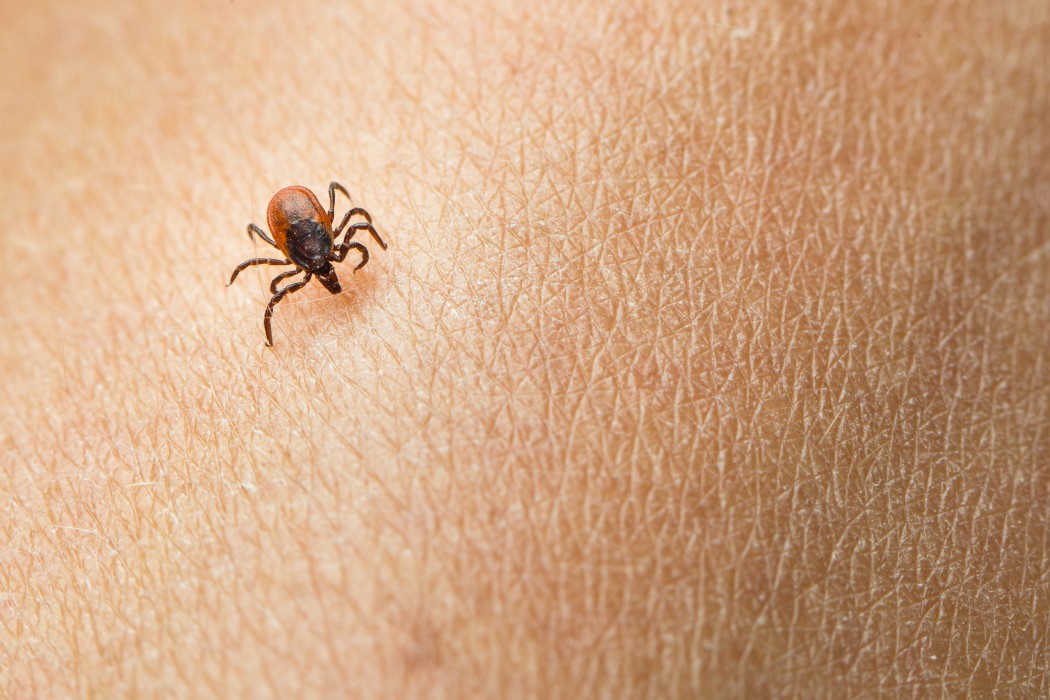Parents and caregivers deal with their fair share of “ick”-inducing situations, but there’s something about finding a tick embedded in your child’s skin (or yours!) that creates an extra sense of panic.
Warmer weather makes ticks more active. Combine this with more outdoor playtime for kids and families, and you have a perfect storm for an increase in tick bites across the area.
Here are the five things you should know as tick season ramps up in Maryland:
How to Remove a Tick
You found a tick! Now what? Don’t panic, just reach for a set of fine-tipped tweezers and grasp the tick as close to the skin’s surface as possible. Pull upward with steady, even pressure. Don’t worry too much if you aren’t able to remove the mouth of the tick—once the body is removed it can no longer transmit disease. Clean the bite area and your hands with rubbing alcohol or soap and water.
Avoid “folklore” remedies, such as using heat to make the tick detach or suffocating it with petroleum jelly. The goal is to remove the tick as quickly as possible.
Consider saving the tick in a plastic baggie in case you need to visit the doctor. If that’s not possible, it’s important to note the size of the tick, whether it was actually attached to the skin and if it was engorged (that is, full of blood). It is also helpful to know how long the tick was likely attached to the skin. If it was not attached, was easy to remove, and was not full of blood when it was removed, the tick is not likely to transmit Lyme disease or any other infection.
Not All Ticks Carry Lyme Disease
Lyme disease is transmitted primarily by deer ticks, but not all deer ticks are infected with the bacteria that causes Lyme disease. Adult deer ticks grow only to about the size of a sesame seed and have reddish hind bodies with black markings and black legs.
Lyme disease is debilitating, though rarely fatal, and early symptoms closely resemble the flu, such as fever, headache, fatigue, and muscle and joint aches. A slowly spreading bull’s-eye shaped rash usually occurs at the site of the bite.
If you’re bitten by a deer tick, a healthcare expert can advise you on one of two approaches: observe and treat if signs or symptoms of Lyme disease develop or treat with a preventive antibiotic immediately. Your medical history will largely determine which of these options is chosen. There is no benefit to blood testing for Lyme disease at the time of the tick bite—even people who become infected will not have a positive blood test until approximately two to six weeks after the infection develops.
When to Call the Doctor
If you or your family member develops any of the symptoms of Lyme disease, call your doctor right away. Early diagnosis and treatment of Lyme disease with antibiotics can prevent serious illness and long-term complications.
Other reasons to call the doctor would be if you can’t remove the tick or the tick’s head, the bite site begins to look infected, or a fever or rash develops in the days or weeks following a tick bite. Don’t hesitate to seek medical attention if you have questions or concerns, it’s better to be safe than sorry!
How to Prevent Tick Bites
A little prevention and thinking ahead can go a long way in preventing tick bites. Ticks crawl, they do not fly or jump, so avoiding wooded bushy areas with high grass, and walking in the center of trails can help you avoid direct contact with ticks.
Use repellents that contain 20-30% DEET on exposed skin and clothing for several hours of protection. Always follow the product instructions—especially when it comes to the age of your child—and avoid hands, eyes and mouth.
Bathe or shower as soon as you can after coming indoors, and perform a body check to more easily find ticks that might be crawling on you. Parents should check their kids for ticks under their arms, in and around the ears, behind the knees, between the legs and especially in their hair. Ticks also love to hitch a ride on pets and pet gear, so inspect those, too.
It’s Not Just a Warm Weather Concern
As nice as it would be to not have to worry about ticks after the spring and summer months pass us, ticks are indeed active even in the winter. The cold causes many ticks to be less active, but deer ticks will be active any winter day the ground is not snow-covered or frozen. Bottom line: Don’t be caught off guard!




